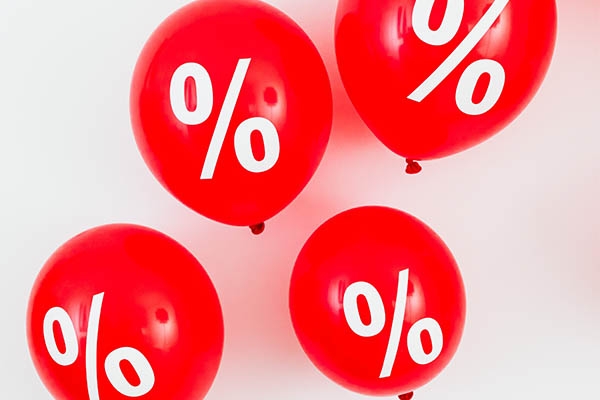In case you hadn’t noticed, yields on bank certificates of deposit are now at the highest they have been since 1995. Still more significant, the difference in yield between conventional U.S. Treasury obligations and other instruments has also been growing. This means that a quick look at the Treasury market is no longer a good measure of how much competition the stock market is feeling from its traditional nemesis.
Here are some recent examples:
- While the national average on 1 year bank certificates of deposit is 5.42 percent according to Banxquote.com, E*Trade Bank has been advertising 1 year CDs with a 7.42 percent annualized yield. E*TradeBank boasts that its yields are in the top one percent across the country which suggests that you and I still have to hunt for the most attractive yields. At 7.42 percent, however, we’ll be well paid for our effort.
- The yield on I-Savings Bonds— the ones that are inflation adjusted— will be 7.49 percent from May through October. The yield is determined by adding the annualized rate of inflation (3.82 percent according to a recent release) to a fixed return of 3.6 percent. Sold at face values of $50 to $10,000, these securities earn interest tax-deferred until cashed. Savers redeeming bonds before 5 years are subject to a 3-month earnings penalty. (If you’d like more information, visit www.savingsbonds.gov.)
- The yield spread between Treasury obligations and high quality corporate bonds has widened. Recently, it was over 50 basis points (1/2 of 1 percent) for one-year maturities, rising to over 150 basis points for ten-year maturities. There is also a large spread between Treasuries and Ginnie Mae obligations of similar maturity. (Ginnie Mae obligations are packages of home mortgages that have been sold as securities with the principal value of the investment guaranteed by the government.)
Is this important?
I think so, and for two important reasons.
First, yield investing has been a pretty dismal activity in recent years because interest rates were in a long, secular decline. Now, with rates rising, people who are retired or supplementing earned income with investment income are about to get a better deal investing their nest egg. By combining carefully selected CDs, Ginnie Mae funds, and a few high quality preferred stocks, it is possible to have a current yield of 7.5 to 8.0 percent. That’s a big increase over the 5 to 6 percent retirees have been struggling to maintain.
Second, the same rising yield that makes life easier for retirees may also have a significant impact on those still building their nest eggs for the future. You can understand by imagining what your 401k or other investment account statement will say at the end of June. If nothing changes between now and then, your large stock funds will be down around 6 percent and your small stock funds will be down around 8 percent. For some, the figures will be a lot worse.
Homely cash, meanwhile, will have earned 3 percent. As a result, the return on stocks is trailing the return on simple cash by 9 to 11 percent. We haven’t experienced anything like this since 1994.
This is not the investment world we have come to take for granted. This is not the inalienable right to increasing wealth we associate with common stock ownership. In 8 of the last 10 years, stocks have beaten cash cold. Money held in money market accounts, money market mutual funds, and short-term government income funds has been an embarrassment. Stocks have been the ‘no-brainer’ investment, providing record breaking yearly returns.
Now, the rules may be changing.
If interest rates continue to rise— as promised by Federal Reserve Chairman Alan Greenspan— stocks will be competing against a stronger and stronger enemy, an enemy whose victory is expressed in lower price to earnings multiples.
Will it happen?
No one knows, including Alan Greenspan. What many investors may not understand, however, is that nearly half of the total return stocks have offered since 1982 is the result of the quadrupling of stock price to earnings multiples, from 8 to 32, as interest rates fell. A sustained rise in interest rates could start to reverse that magic.
This information is distributed for education purposes, and it is not to be construed as an offer, solicitation, recommendation, or endorsement of any particular security, product, or service.
Photo: Karolina Grabowska
(c) Scott Burns, 2022
